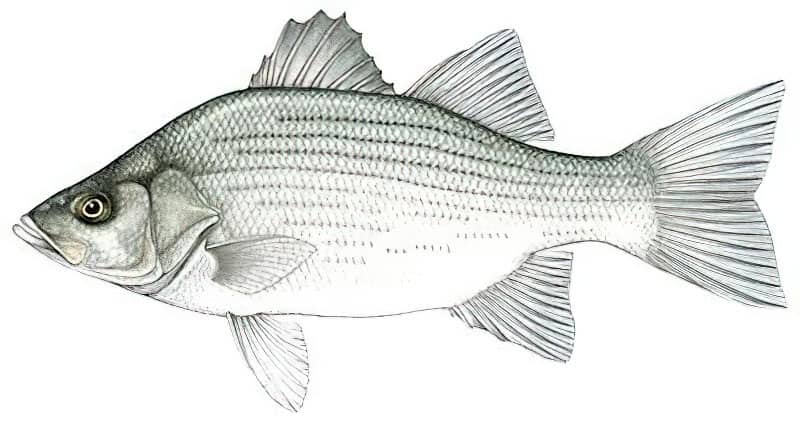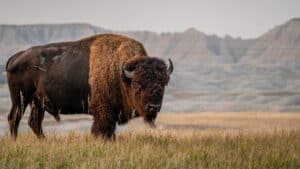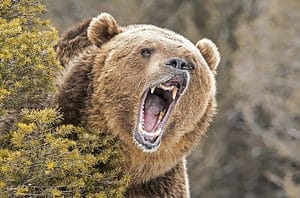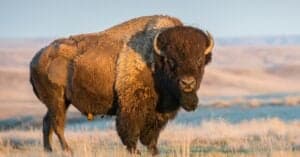
Like the official state seal, the state animals of Oklahoma also have significance. These animals symbolize pride and unity for the residents. In some states, the animals are used on flags and other official emblems.
Besides formal uses, state animals are used by the residents to celebrate and promote their unique wildlife and natural resources. They also help showcase their history, cultural identity, and values.
What are the State Animals of Oklahoma?
There are several Oklahoma official state animals. Here’s an in-depth look at each:
1. State Mammal: American Bison

Bison is both an icon of the American West and a symbol of Oklahoma.
©iStock.com/Jillian Cooper
In 1972, the Oklahoma Legislature designated the American bison, also known as the American buffalo, as the official state mammal of Oklahoma. This move aimed at acknowledging the animal’s historical and economic significance to the state.
This majestic beast fits the role perfectly because it is a true icon of the American West and retains a special place in the hearts of all Oklahomans.
In the past, vast herds of bison once roamed the Great Plains. They were critical to the culture and livelihood of Oklahoma’s Native American tribes, such as the Osage, Kiowa, and Comanche. This animal provided food, clothing, and shelter to these tribes and was revered in many cultures.
Yet when European settlers arrived, their hunting and westward expansion decimated the bison’s population. In 1889, the federal government established harsher game rules, and it is estimated that just 300 to 500 buffalo survived.
Fortunately, conservation efforts have assisted the species in regaining its population. Several of these herds can be observed in public parks and wildlife refuges, while others are raised for meat on private ranches and farms.
2. State Bird: Scissor-tailed Flycatcher
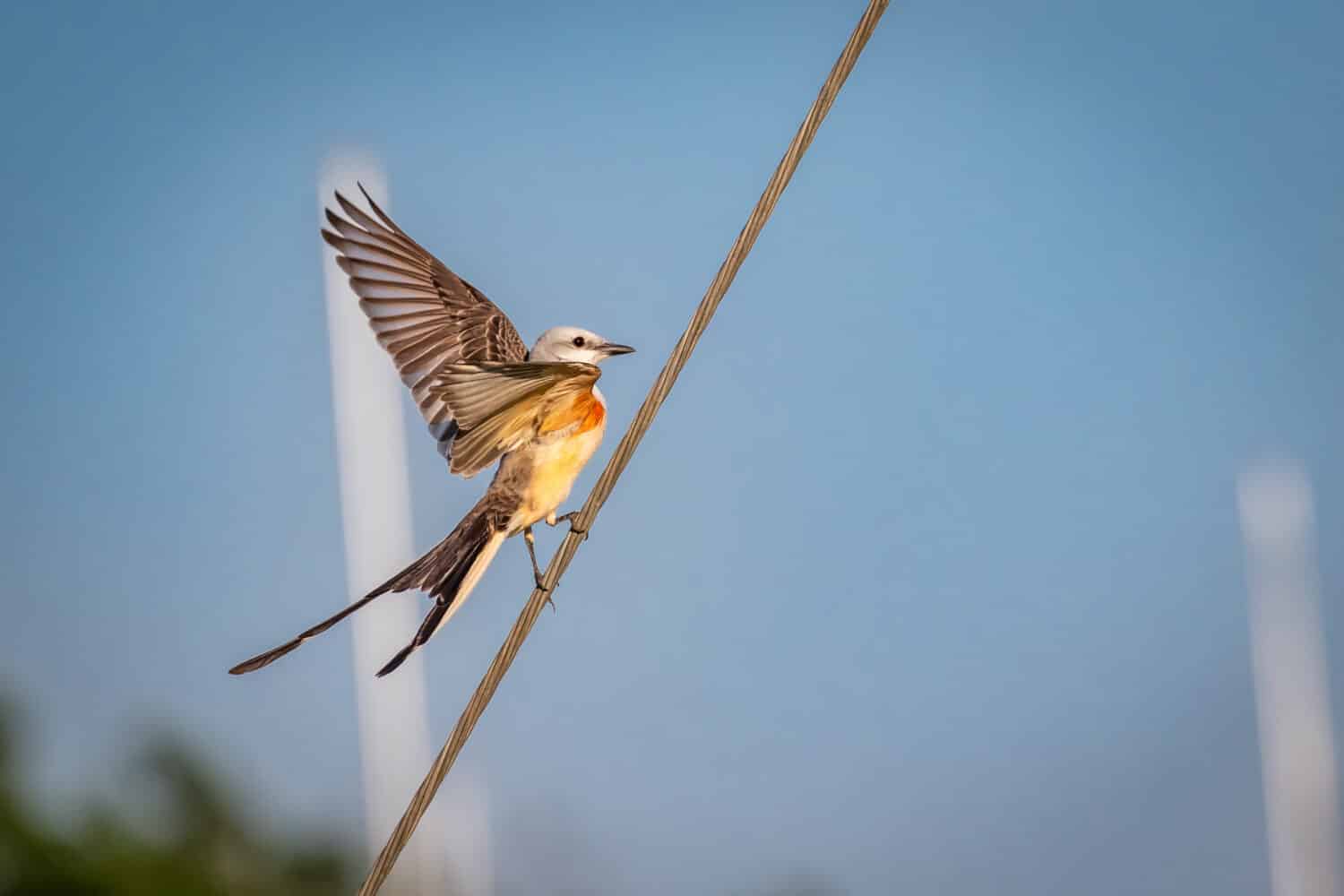
The Scissor-tailed Flycatcher is the official state bird of Oklahoma.
©Richard G Smith/Shutterstock.com
In 1951, the Scissor-tailed Flycatcher was selected as the official state bird of Oklahoma, topping rivals like the wild turkey and the mockingbird. The Scissor-tailed Flycatcher has long tail feathers visible when flying around the state’s wide-open expanses. It’s a regular sight in Oklahoma. Nonetheless, the bird has contributed much to Oklahoma’s history and culture in addition to its physical presence.
For instance, the Scissor-tailed Flycatcher was one of the few bird species that survived and thrived in the area during the Dust Bowl of the 1930s. Many Oklahomans viewed its toughness and adaptation as a sign of hope and tenacity.
The Scissor-tailed Flycatcher is a long-tailed, thin bird with a tail that can reach a length of 12 inches. Its head and underparts are a light pinkish buff, while its upper body is a pale grey. It features a striking salmon-colored belly and a black crown.
The southern Great Plains of the United States, especially Oklahoma, are home to Scissor-tailed flycatchers. They favor open environments like savannas, prairies, and farmlands.
3. State Reptile: Common Collared Lizard

The Common collared lizard is the state reptile of Oklahoma.
©PDeluca/Shutterstock.com
In recognition of its distinctive appearance and value to the state’s ecology, Oklahoma’s Common Collared Lizard (Crotaphytus collaris) was named the state reptile in 1969. The lizard got its name from the recognizable black band that encircles its neck. It’s also known as the mountain boomer.
The Collared Lizard, a top predator in its ecosystem, aids in controlling the numbers of insects and smaller animals. Changes in its population or behavior can indicate problems like pollution or habitat loss, so it also functions as an environmental health indicator.
One intriguing aspect of this lizard is that it can control its body temperature by altering its skin color. It turns darker or lighter depending on the temperature.
4. State Amphibian: American Bullfrog
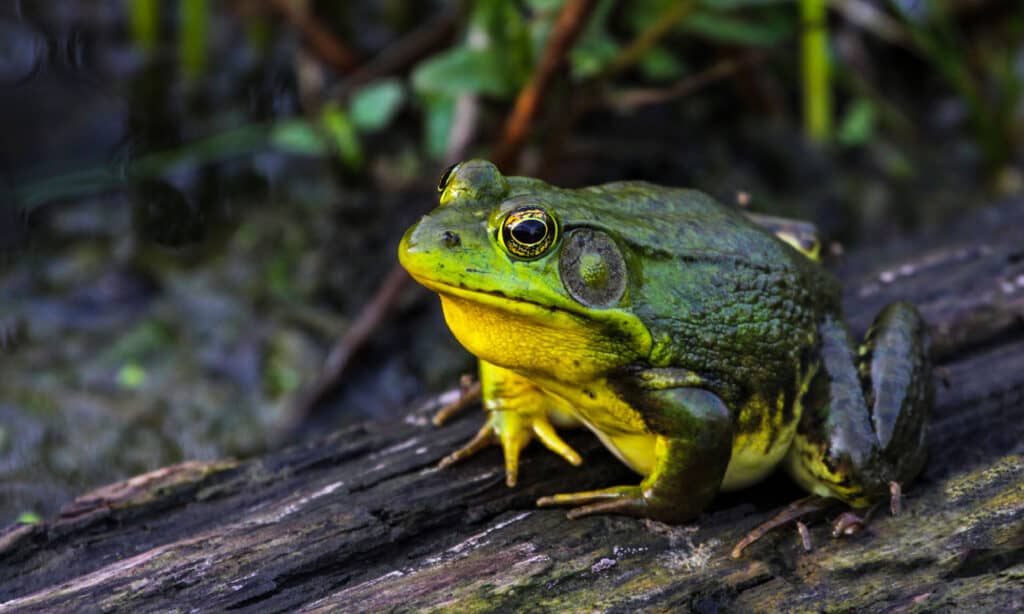
Oklahoma’s official state animals include the state amphibian- American bullfrog.
©iStock.com/187715314
Lithobates catesbeianus, also known as the American Bullfrog, is the state amphibian of Oklahoma. It is a widespread species in Oklahoma and is crucial to the state’s ecology.
Native to much of North America, including Oklahoma, the American Bullfrog is frequently seen close to bodies of water like lakes, ponds, and rivers. It plays a significant role in controlling the populations of insects, small animals, and even other frogs.
The American Bullfrog does not significantly influence Oklahoma’s culture. Due to its popularity as a delicacy, it’s now present in some dishes and hunting customs in Oklahoma.
Even though the Bullfrog may not impact the Oklahoman culture in other ways, the animal is still a significant component of the state’s ecology and natural heritage. Its presence in Oklahoma’s waterways and wetlands helps to maintain healthy ecosystems and adds to the state’s biodiversity.
5. State Fish: White Bass
The white bass, often known as the sand bass, was selected as the official Oklahoma state fish in 1974. According to the Oklahoma Department of Wildlife Conservation, the vast distribution of white bass required building huge reservoirs. They are currently present throughout the state.
The white bass is simple to recognize thanks to its characteristically arched back, situated just behind the fish’s head. Additionally, it only has one tongue patch. Fishers catch white bass weighing 1.5 million pounds out of Oklahoman waterways yearly.
Due to their short lifespan and a high potential for reproduction, many lakes do not have creel limits as there are plenty of white basses. A female bass is capable of producing up to one million eggs.
The photo featured at the top of this post is © PDeluca/Shutterstock.com
Thank you for reading! Have some feedback for us? Contact the AZ Animals editorial team.




